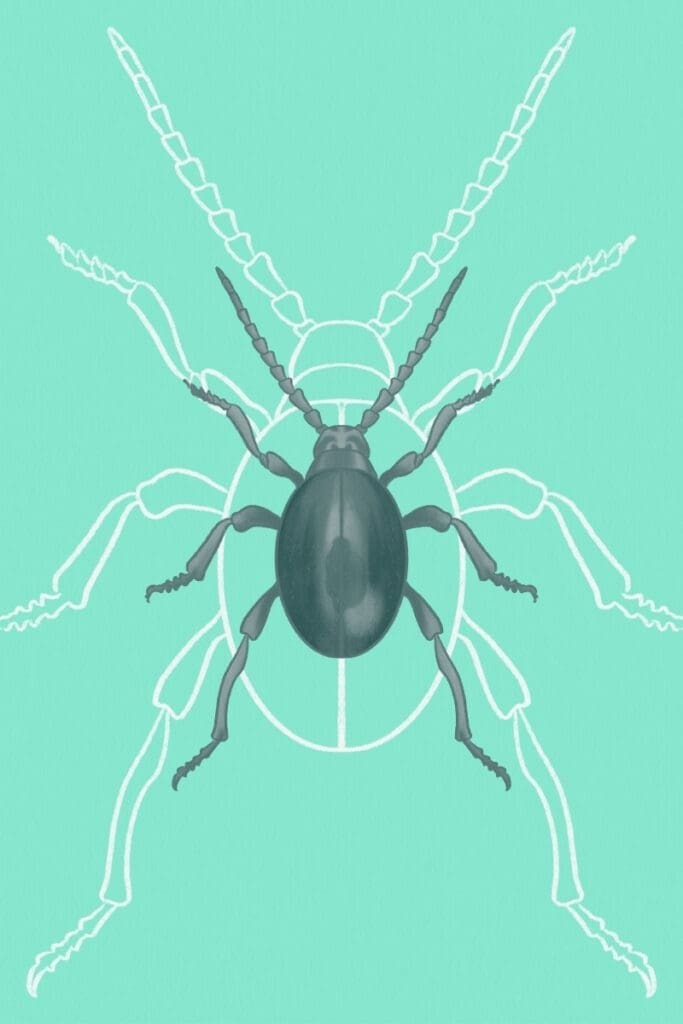
About Beetles
Beetles are a diverse group of insects that can be found all around the world, and they come in all shapes and sizes. The defining characteristic of beetles is their hardened, shell-like forewings, called elytra, which act as a protective shield for their delicate hindwings and abdomen.
- Out of the 1.7 million animal species known to science, about 400,000 of those species are beetles.
- While some beetle species are considered pests, many others are beneficial and play a crucial role in plant pollination, second only to bees.
- Beetles undergo complete metamorphosis, which means they pass through 4 distinct stages in their life cycle: egg, larva, pupa, and adult.
Beetles in Your Home
While most beetles are harmless and even beneficial in the wild, some are considered common household pests that can cause significant damage to food and property. For example, powderpost beetles can weaken wooden structures, while carpet beetles damage fabrics. Other species of beetles infest stored grains, cereals, and other dried foods typically found in pantries.
Dealing with a beetle infestation depends on several factors, including the type of beetle, the extent of the problem, and your own comfort level and resources. Accurate identification of the species is important, as it dictates the appropriate control measures. While mild infestations might respond to natural deterrents and targeted traps, extensive beetle populations often require professional intervention.
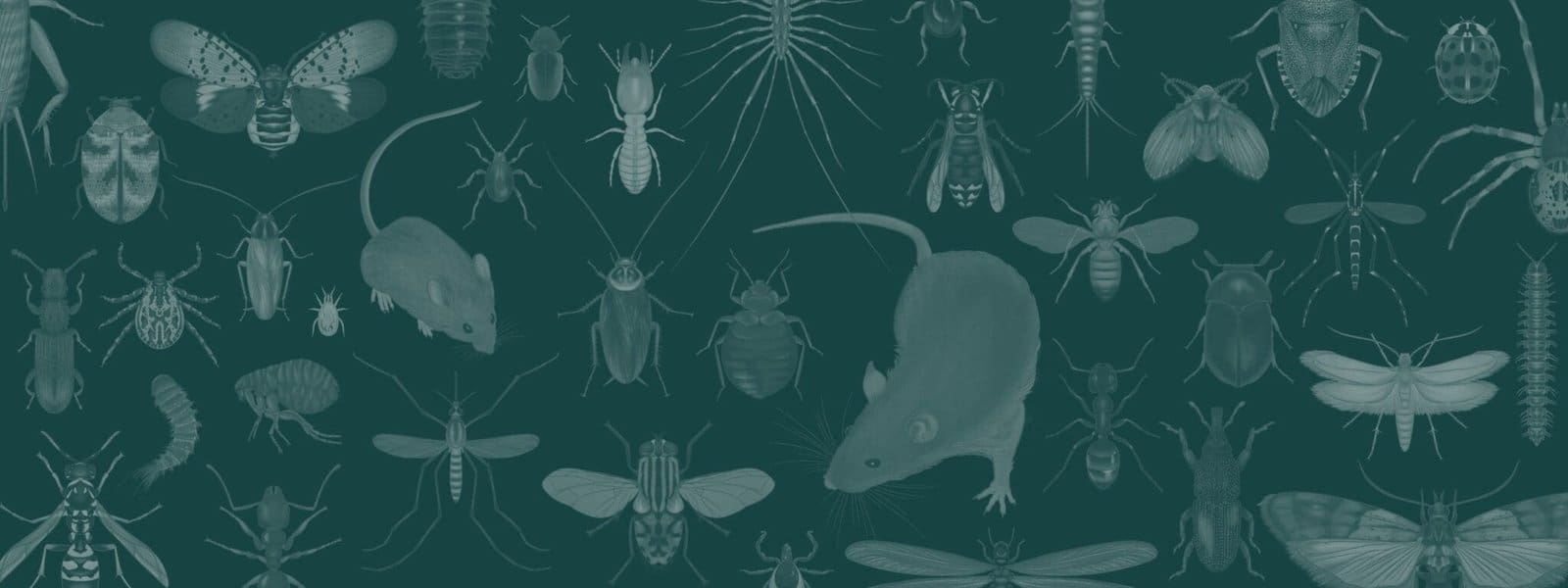
Pest Species in New York City / Tri-State Area:
Shiny Spider Beetle
Gibbium aequinoctiale
Spider beetles resemble small spiders due to their long legs and rounded abdomens.
These pests prefer dark places with lots of moisture, such as damp basements and crawl spaces. At night they scavenge for food, which includes wool, hair, animal droppings, and other debris.
If they get into pantries and food containers, spider beetles may contaminate stored food products with their eggs, larvae, silk (produced by the larvae), and droppings.
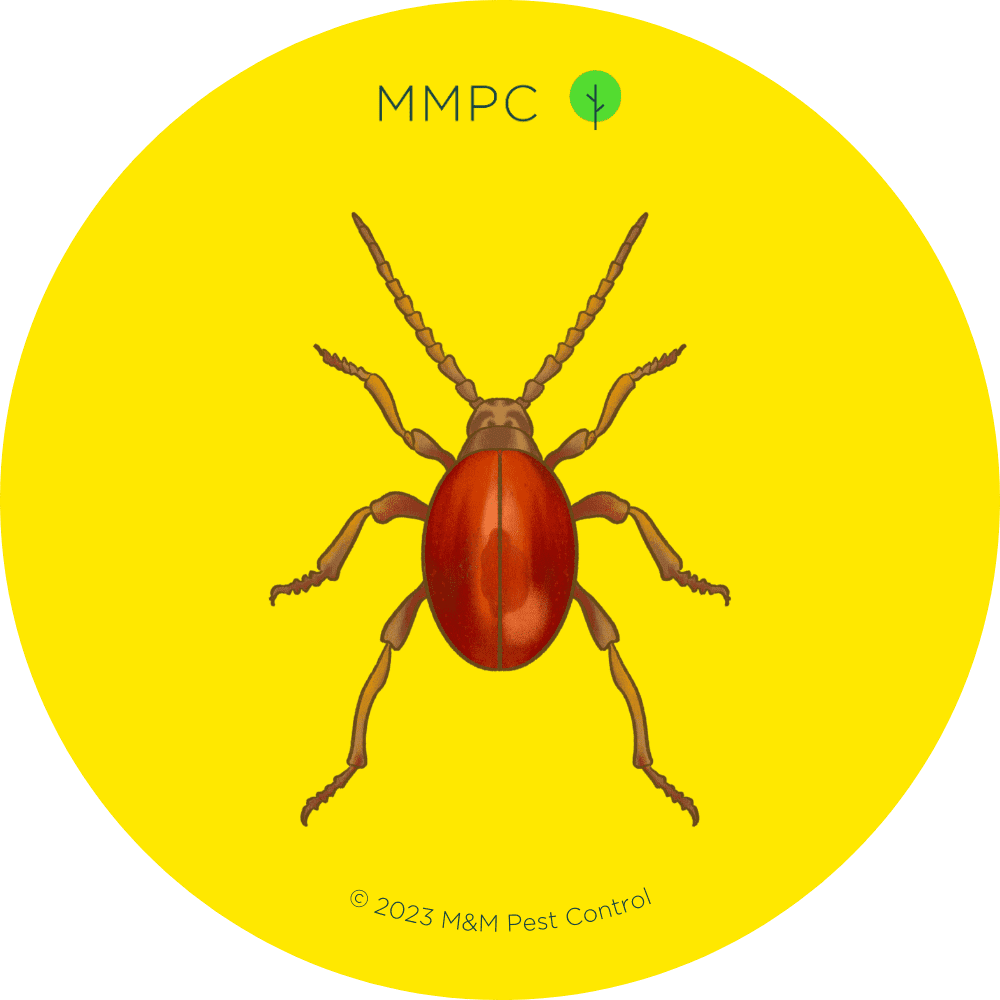
Size: 1/16″ – 1/8″ long (1.5 – 3.5 mm); about the size of a sesame seed
Color: Dark reddish-brown
Shape: Round, bulb-like body with a small head, smooth elytra, long antennae, and 6 spider-like legs
Identifying Features
- 6 spider-like legs with pale yellow hairs
- Long, thin antennae
- Small head and thorax oriented downwards
- Round, bulb-like body with smooth, shiny elytra covering the abdomen

Size: 1/16″ – 1/8″ long (1.5 – 3.5 mm); about the size of a sesame seed
Color: Dark reddish-brown and yellowish-gray
Shape: Round, bulb-like body with a hairy head and thorax, smooth elytra, long antennae, and 6 spider-like legs
Identifying Features
- 6 spider-like legs with yellowish-gray hairs
- Long, thin antennae covered in short, yellowish-gray hairs
- Head and thorax covered in short, yellowish-gray hairs
- Thorax is almost cylindrical with blunt projections on either side and a waist-like constriction at the base
- Round, bulb-like body with smooth, shiny elytra covering the abdomen
Cigarette Beetle
Lasioderma serricorne
Cigarette beetles are named for their attraction to stored tobacco (cigarettes, cigars, dried tobacco leaves, etc.), although they may also be found in a wide range of stored foods.
Adult beetles are nocturnal. They are good fliers and can occasionally be seen around doors and windowsills as they try to fly outside.
Aside from contaminating food, cigarette beetles are otherwise harmless and don’t carry any diseases.
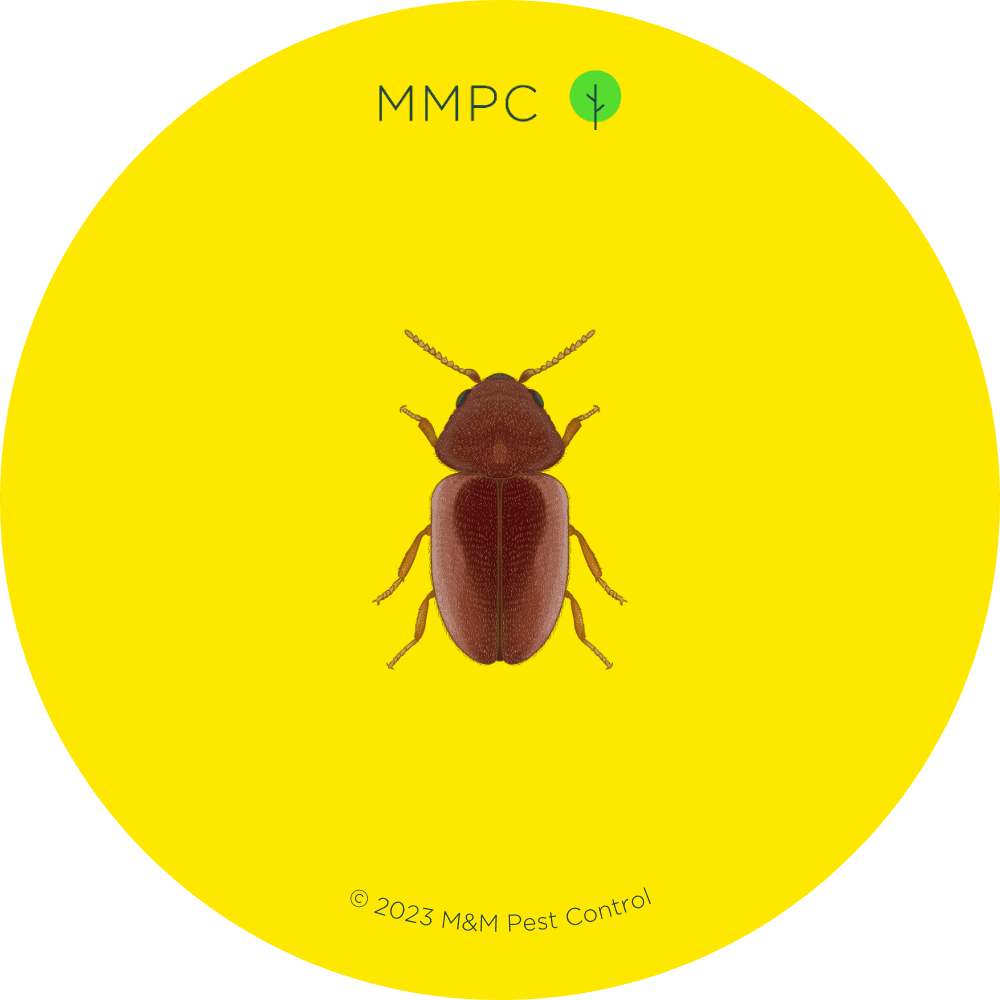
Size: 1/12″ – 1/8″ long (2 – 3 mm); about the size of a chia seed
Color: Brown or reddish-brown
Shape: Rounded, oval-shaped body with smooth elytra, serrated antennae, and 6 legs
Identifying Features
- 6 legs
- Saw-like (serrate) antennae with 11 tiny segments
- Rounded, oval-shaped body
- Head and thorax covered by a hood-like plate (pronotum)
- Hardened forewings (elytra) covered in fine hairs
- Able to fly
Drugstore Beetle
Stegobium paniceum
Drugstore beetles can infest almost any type of stored food, including grains, seeds, spices, cereals, flour, nuts, beans, dried fruits, dried fish, and leather.
They have also been known to feed on prescription drugs, hence their name.
They are similar in appearance and behavior to Cigarette Beetles. Adult beetles are nocturnal and are particularly attracted to light at night. The main concern with drugstore beetles is food contamination.
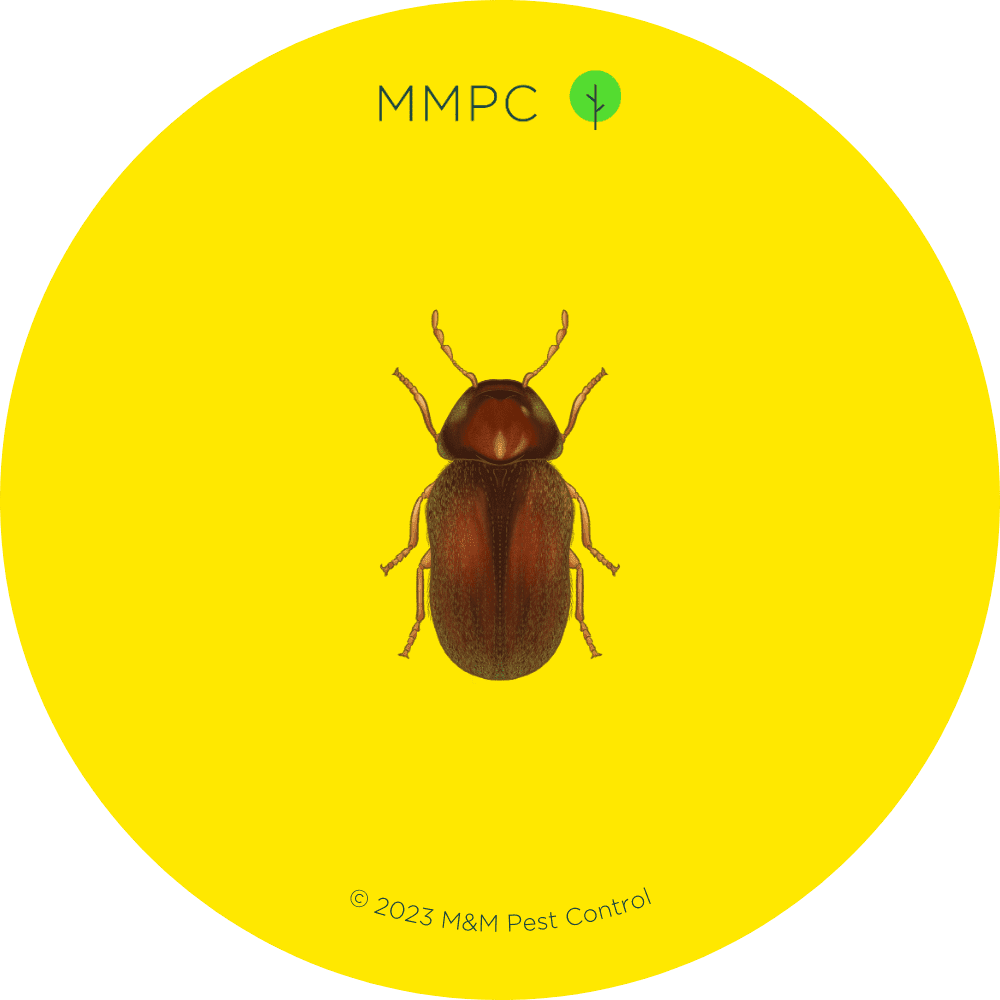
Size: 1/10″ – 1/8″ long (2 – 3.5 mm); about the size of a sesame seed
Color: Brown or reddish-brown
Shape: Rounded, pill-shaped body with striated elytra, clubbed antennae, and 6 legs
Identifying Features
- 6 legs
- Thin antennae tipped with a 3-segment club
- Rounded, pill-shaped body
- Head and thorax covered by a hood-like plate (pronotum)
- Hardened forewings (elytra) with faint longitudinal grooves (striations)
- Able to fly
Sawtoothed Grain Beetle
Oryzaephilus surinamensis
Sawtoothed grain beetles are widespread pests in the food industry as well as in home pantries. They can infest a wide range of stored foods, especially stored grains, seeds, and pet food.
They don’t bite, but their jaws are capable of chewing through cardboard and plastic- or foil-wrapped packaging. Once inside, these pests contaminate the food they feed on and cause moisture to build up, which may lead to mold problems.

Size: 1/10″ – 1/8″ long (2.5 – 3 mm); about the size of a chia seed
Color: Reddish-brown
Shape: Narrow, flattened body with sawtoothed ridges, striated elytra, clubbed antennae, and 6 legs
Identifying Features
- 6 legs
- Beady antennae tipped with a 3-segment club
- Narrow, flattened body
- Thorax covered in characteristic “sawtoothed” ridges, with 6 “teeth” on each side
- Long, narrow elytra with many longitudinal grooves (striations)
- Cannot fly
Powderpost Beetles
Lyctinae spp.
Powderpost beetles are wood boring insects that are second only to termites when it comes to the damage they cause. They get their name from the fine powder-like sawdust they leave behind.
The adult beetles lay their eggs in cracks or pores in hard wood. After hatching, the larvae bore tunnels inside the wood as they feed and develop.
New beetles emerge from the infested wood, leaving behind tiny, round exit holes (called “shot holes”) about the size of a pinhead.

Size: 1/12″ – 1/4″ long (2 – 6 mm); about the size of a flax seed
Color: Reddish-brown to black
Shape: Narrow, cylindrical body with striated elytra, clubbed antennae, and 6 legs
Identifying Features
- 6 legs
- Short antennae tipped with a 2-segment club
- Narrow, cylindrical body
- Long, narrow elytra with many longitudinal grooves (striations)
- Able to fly
Rice Weevil
Sitophilus oryzae
Rice weevils are serious pests of stored grain and seeds, as well as hard processed foods like dry pasta and dry pet food.
They are “internal” feeders, meaning they deposit eggs inside whole grains and seeds. Their tiny, grub-like larvae feed from the inside while developing and eventually pupating within the hollowed-out husk.
Adult rice weevils can fly, which distinguishes them from a similar-looking species, wheat weevils. Neither species of weevils bite nor carry diseases.
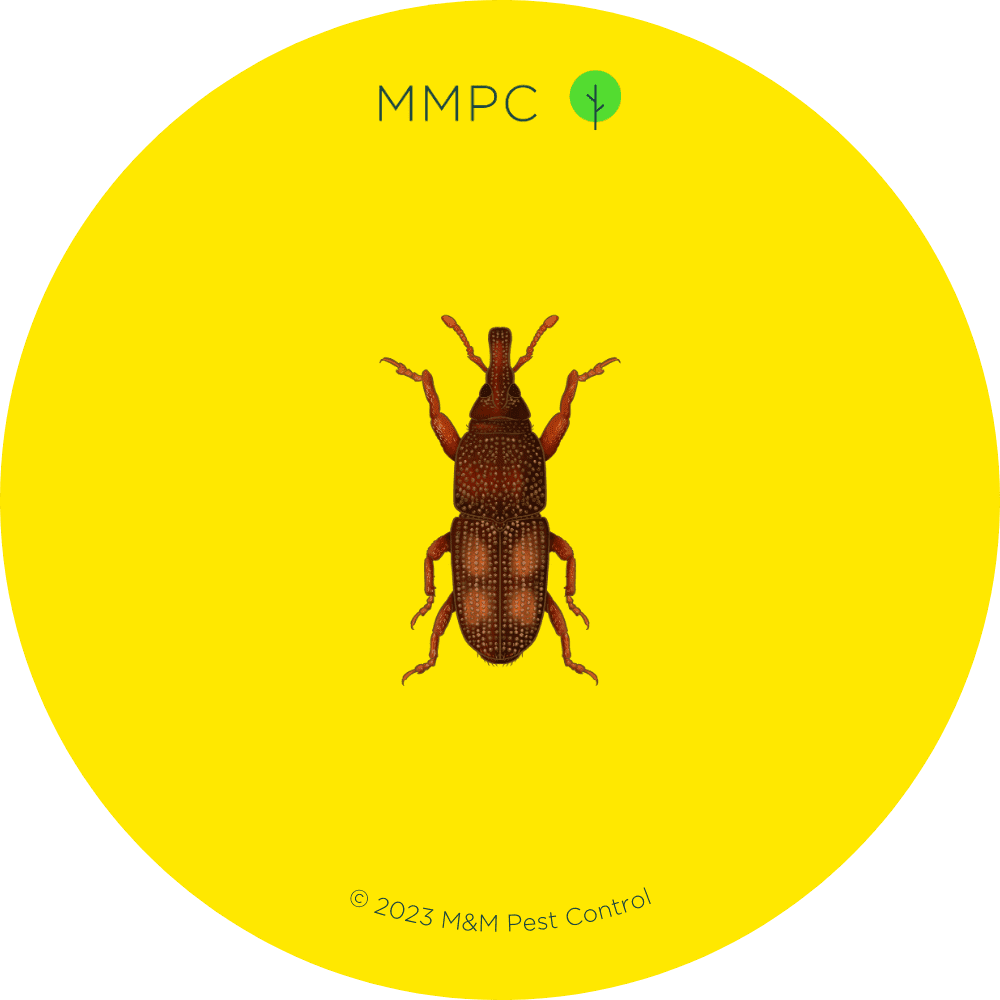
Size: 1/8″ – 1/6″ long (3 – 4.5 mm); about the size of a peppercorn
Color: Reddish-brown
Shape: Oval-shaped body with a narrow and elongated snout, spotted elytra, bent antennae, and 6 legs
Identifying Features
- 6 legs
- Short, bent (geniculate) antennae
- Elongated head with a long, narrow snout (rostrum)
- Stout, bumpy thorax and abdomen covered in small, round pits
- Hardened forewings (elytra) with 4 light reddish or yellowish spots
- Able to fly
Black Vine Weevil
Otiorhynchus sulcatus
Black vine weevils are garden pests that feed on a variety of ornamental plants.
The adult weevils feed on foliage, leaving behind notched chewing marks on the edges of leaves. The larvae are more problematic—they feed on roots, which can injure or stunt the growth of the host plants.
Black vine weevils are not as commonly seen indoors, but they can occasionally wander in through an open window or hitch a ride in newly-bought houseplants.
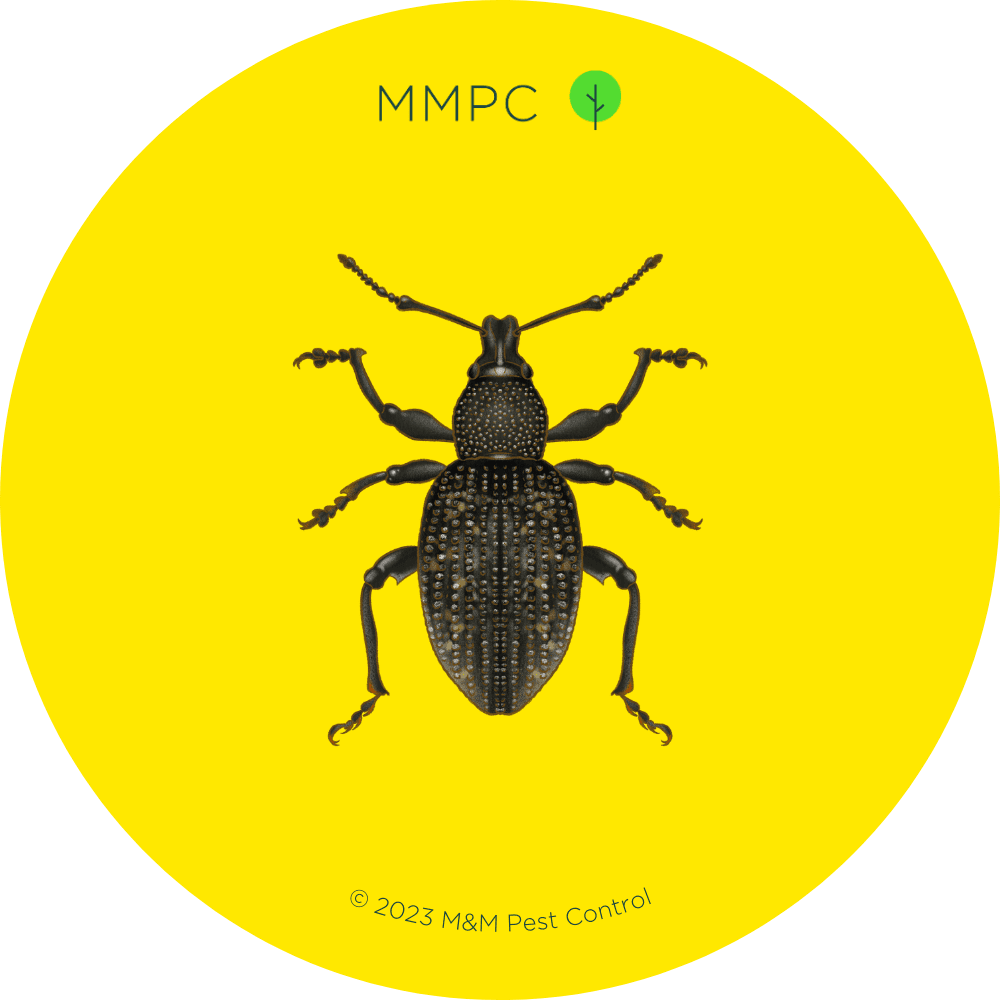
Size: 1/4″ – 3/8″ long (8 – 10 mm); about the size of an apple seed
Color: Slate gray to black
Shape: Oval-shaped body with a short and thick snout, bumpy elytra, bent antennae, and 6 legs
Identifying Features
- 6 legs
- Long, bent (geniculate) antennae
- Elongated head with a downward-curved snout (rostrum)
- Large, bumpy thorax and abdomen covered in small pits and speckled with patches of short, pale-colored hairs
- Hardened forewings (elytra) fused together along the midline
- Cannot fly


